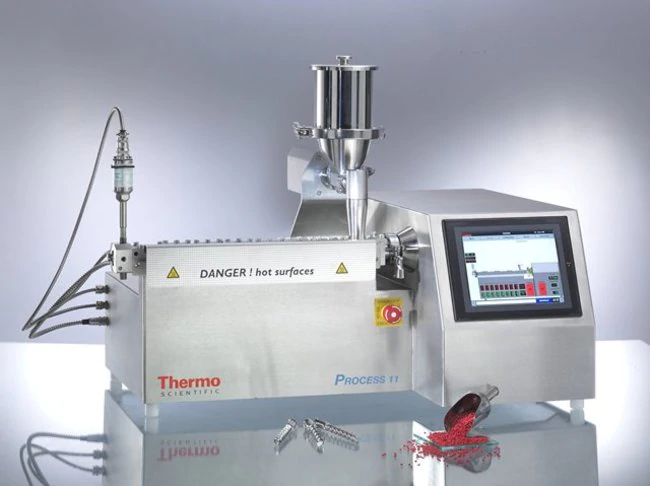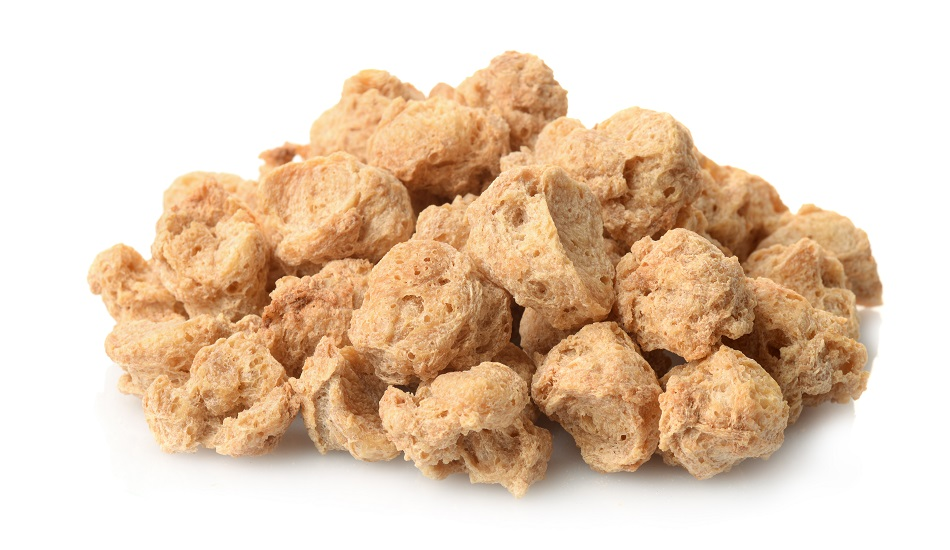
In this interview, AZoM talks to Dr.-Ing. M. Azad Emin, Chair of Food Process Engineering at Karlsruhe Institute of Technology, about his team's research within the field of sustainable foods, and the role of extrusion within it.
Sustainability is an essential trend in the food sector, on levels of both nutrition and food production. What drives the sustainability aspect from a consumer and processing standpoint?
Sustainability has become a megatrend, affecting almost every field in the business world, and the food sector is not an exception. There are many factors driving this trend, but one obvious reason is that consumers are exposed to food-related information on an almost daily basis. They are recognizing that their choices have a strong impact on the environment and that this is often not a positive one.
People are looking for a solution to reduce the possible negative impact of their diet on our planet. This increasing awareness has been forcing the food industry to undergo major concept revolutions, by changing from traditional foods that we have been consuming for many years to more sustainable food products.
The food industry has started to look for new alternatives and more sustainable ingredients to produce and design food products. However, directly replacing the conventional ingredients in traditional food products with more sustainable ingredients can have an adverse effect on flavor, mouthfeel, odor, and texture.
Take meat products, for instance. The use of proteins from more sustainable sources has been gaining increasing importance. The fundamental question that arises is: how can we produce high-protein foods from more sustainable sources, such as plant proteins, micro-algae or even insects?
What role does extrusion play in this?
One method of production is extrusion, which has been used since the 1950s to produce meat analogs from plant proteins and continues to be a focus for researching new meat analog formulations. These products need to resemble meat-like fibrillar textures, a quality often desired by consumers who want to reduce their meat consumption but do not want to give up the features of meat such as its beefy flavor and juicy mouth-feel.

Process 11 Parallel Twin-Screw Extruder
Furthermore, extrusion offers huge flexibility with respect to the raw material selection and the wide variety of food products that can be designed by this system. These aspects make this process very attractive for research, as it can offer many solutions to designing more sustainable food products.
What is KIT's research focus in the field of sustainable food and what applications do you see your research having?
With respect to the design of sustainable food systems, we have been working in three different areas. The first one is the design of meat analogs based on plant proteins such as wheat, soy or pea proteins, or other plant proteins in general. Here we analyze the extrusion process and study the mechanisms which are responsible for the creation of those meat-like structures.
Another topic is related to the so-called functionalization of alternative proteins, by using extrusion technology. By functionalization, we mean that the proteins can gain new or improved properties, such as better solubility, digestibility or texture-giving properties, which allow them then to be used in the formulation of traditional food products or innovative food products.

Pile of dry soya chunks. Image Credit: Anton Starikov/Shutterstock.com
The third one, an alternative promising application area we focus on, is the functionalization and up-cycling of food by-products for fruit and vegetable processing. There are a large number of food by-products, such as apple pomaces from apple juice production, carrot pomaces from carrot juice production, or even potato peel or pulp from potato production.
These raw materials are very rich in fibers and bioactives, which are very valuable. However, these raw materials are not really utilized as the addition of these ingredients into food products can adversely affect the texture and mouth-feel of foods.
By using extrusion technology, we can actually change the functional properties of these raw materials, allowing them to be used in food formulations, not only to increase the fiber and bioactive content, but also to create the specific textures in food products such as bakery products, smoothies, or even sausages. These are the three domains that we are working on.
What are the challenges in the production of protein-based foods?
Well, the production of protein-based foods, in general, is not a big challenge. The challenge is to achieve a very specific product characteristic when new or different protein sources are used.
As each protein has a different molecular structure and, therefore, different properties, it is not possible to use the same process to produce the same product from different proteins. Consequently, there is a demand for a better understanding of those traditional food processes at a mechanistic level. This understanding is typically achieved after many years by using a trial and error approach. After that, we are able to adapt the process according to the needs of each specific protein.
Take meat analog production by extrusion processing as an example. Here we can produce meat-like textures, but the consumers demand a very exact taste profile and mouth-feel of meat in order to accept a meat substitute. This requires a comprehensive understanding of the process and behavior of those sustainable proteins used, which allows us to design tailor-made, meat-like structures.
This is the challenge we have as the starting point for our research.
Which instruments have been helpful in conducting your research?
We use extrusion as the core technology of our research. Although is not the only technology used to design new sustainable food alternatives, extrusion is one of the very few food manufacturing processes which has been continuously improved since its invention.
Could you explain how and why extrusion is used in your research?
It is one of the very few processes which offers a high degree of flexibility when selecting raw materials and process conditions necessary to produce a wide range of food products. In other words, we can use one extruder to produce many different food products.
Thermo Scientific Process 11
Extruders can be used as a bioreactor to adjust the functional properties of most types of food ingredients, or it can be used as a structuring process to give specific textures to these ingredients. In the case of meat analogs, you might need different textures and flavors for breakfast links, ready-to-eat snacks, or even pet foods. It is very rewarding to see all the new food formats that can be realized when using extrusion technology for this type of research.
You have been working with the Thermo Scientific Process 11 Twin-screw Extruder for your research. What are some of the benefits of using this extruder and how has it accelerated your research?
We work on an experimental level that ends up testing the limits of the extrusion process. This can result in more technical questions that we want to explore possible extensions, adaptations, and developments for the process. Therefore, responsive technical support and consulting is a must for us to succeed. This is one of the main reasons why we decided to work with the company Thermo Fisher Scientific.
When it comes to the Process 11 Extruder itself, it’s small-scale, benchtop format is very easy to handle as well as easy to make changes to process parameters. This means we can perform many experiments in an effective and time-efficient manner when testing different materials and process conditions.
There are also technical advantages, such as the fact that it has a modular design, which makes it easy to change its screw configuration to adapt the process condition to the protein used. It has different dosing locations to add ingredients along the extruder barrel that helps optimize the final formulation. It can also accommodate different throughput levels with a wide variety of screw speeds.
All of these features improve the flexibility of the extrusion process, allowing us to create very mildly to very harsh processing conditions, depending on the application we are working on.
Another advantage of this extruder is the amount of material needed for the experiments, which can vary between a few hundred grams per hour to two kilograms per hour. It is an especially important feature for us, as we sometimes work with model systems to gain more fundamental information about the process. However, these model systems are often very high in purity, making them very expensive to obtain in large amounts. This is not a problem when using the Process 11 Extruder because it allows us to work with very small amounts of raw materials for research-scale testing.
The list is long, but these are the initial advantages that we see with this system.
Where can our readers find out more about your research?
The easiest way is to take a look at our website. On this website, you will see a log of extrusion and if you click on it, it will direct you to our website where you can see all the publications and projects that refer to the topics I have mentioned.

 Learn more about the Process 11 Extruder utilized by Dr. Emin’s lab for food research
Learn more about the Process 11 Extruder utilized by Dr. Emin’s lab for food research
About Dr.-Ing. M. Azad Emin
 Dr.-Ing. M. Azad Emin received his PhD degree in Process Engineering from Karlsruhe Institute of Technology (KIT) in Germany. Subsequently, in 2013, he has established the extrusion research group in the Institute of Process Engineering in Life Sciences at KIT. He is currently leading a research group of 6 PhD students focusing mainly on the analysis of extrusion processing at mechanistic level to design sustainable and functional food systems. Alternative proteins based food formulations is, therefore, one of the main topics (with the total project budget of 2M€), he has been working on. His research has been acknowledged by several awards including EFCE Food Engineering Award (2013), BBGG -Award (2015), IUFoST Young Scientist Award (2016), and ProcessNet-Food Process Engineering Award (2016).
Dr.-Ing. M. Azad Emin received his PhD degree in Process Engineering from Karlsruhe Institute of Technology (KIT) in Germany. Subsequently, in 2013, he has established the extrusion research group in the Institute of Process Engineering in Life Sciences at KIT. He is currently leading a research group of 6 PhD students focusing mainly on the analysis of extrusion processing at mechanistic level to design sustainable and functional food systems. Alternative proteins based food formulations is, therefore, one of the main topics (with the total project budget of 2M€), he has been working on. His research has been acknowledged by several awards including EFCE Food Engineering Award (2013), BBGG -Award (2015), IUFoST Young Scientist Award (2016), and ProcessNet-Food Process Engineering Award (2016).
Disclaimer: The views expressed here are those of the interviewee and do not necessarily represent the views of AZoM.com Limited (T/A) AZoNetwork, the owner and operator of this website. This disclaimer forms part of the Terms and Conditions of use of this website.